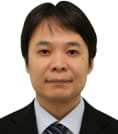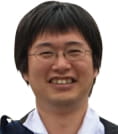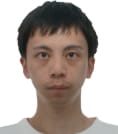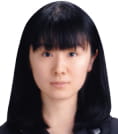- JST Home
- /
- Strategic Basic Research Programs
- /
 PRESTO
PRESTO- /
- project/
- Topological Materials Science for Creation of Innovative Functions/
- [Topology] Year Started : 2019
[Topology] Year Started : 2019
Toshiya Ideue
Symmetry engineering of van der Waals crystals and topological nonlinear transport
Researcher
Toshiya Ideue

Associate Professor
The Institute for Solid State Physics
The University of Tokyo
Outline
In this project, I will focus on the geometrical/topological nature of wave functions in symmetry engineered van der Waals nanostructures. Topological nonlinear transport originating from the characteristic symmetry breaking and its microscopic mechnaism will be investigated. In addition to the nonlinear electric charge trnasport, I will also study the nonlinear transport of non-charged elementary excitations, aiming at the comprehensive understanding of the topological nonlinear response in solids.
Tomoki Ozawa
Topological physics and its applications in atomic, molecular, and optical physics
Researcher
Tomoki Ozawa

Associate Professor
Advanced Institute for Materials Research
Tohoku University
Outline
I investigate topological phenomena characteristic to platforms of atomic, molecular, and optical physics. In particular, I look for novel topological phenomena enabled by unique observation and/or system preparation methods available in atomic, molecular, and optical platforms, which are otherwise difficult to observe. Noticing that many of the atomic, molecular, and optical platforms are open and dissipative, I also look for topological phenomena unique to open systems. The final goal of this project is to pave the way for creating useful atomic, molecular, and optical devices combining topological physics with nonlinearity and non-Hermiticity.
Kenta Kokado
Development of Innovative Network Polymer Materials Attained by Precise Topology Control
Researcher
Kenta Kokado

Professor
Department of Advanced Science and Technology
Toyota Technological Institute
Outline
In this research, network polymer materials will be prepared from porous crystals, which contain reactive functional groups inside the micropore subjected to organic reaction with crosslinkers forming a strong covalent bonding. By applying this approach, the topology of the obtained network polymers will be precisely controlled based on the crystal symmetry and the molecular structure of crosslinkers. The structure and properties of the obtained network polymers will be investigated in detail, such as mechanical, conductive, and heat transfer properties. Finally, by combining with the topological analysis based on mathematical science, the design principle for innovative network polymer materials will be established.
Kouji Taniguchi
Developing topological spin materials based on organic-inorganic hybrid systems
Researcher
Kouji Taniguchi

Professor
School of Science
Tokyo Institute of Technology
Outline
Topological spin structures such as skyrmion are induced by the competition between Dzyaroshinskii-Moriya interaction and ferromagnetic exchange interaction, which produces noncollinear spin configuration, in noncentrosymmetric systems. In this study, I attempt to develop new topological spin materials by controlling noncentrosymmetry of magnetic organic-inorganic hybrid systems through chiral organic molecule introduction to ferromagnetic inorganic frameworks.
Joji Nasu
Spatiotemporal manipulation of elementary excitations in quantum topological magnets
Researcher
Joji Nasu

Associate Professor
Graduate School of Science
Tohoku University
Outline
I will establish numerical techniques to track the real-time dynamics in inhomogeneous systems consisting of quasiparticles in quantum topological magnets and calculate the time evolution triggered by local creation of the quasiparticles and spin injection. Moreover, by calculating the time evolution of the spatial exchange process of the quasiparticles, we will examine the peculiar statistical properties. The first principal calculations and machine learning techniques will be applied to materials design to realize the quantum topological magnets.
Yoichi Nii
Topological phononics toward novel acoustic and thermal properties
Researcher
Yoichi Nii

Associate Professor
Institute for Materials Research
Tohoku University
Outline
The purpose of this research is to reveal topological properties of phonon by using pulse-echo and scannning probe technieques. Based on an artificial topological phononic crystal and natural topological phononic materials, direct observation of phononic edge mode and its impact on heat transport will be explored. Though this research, I will establish topological character of phonon toward novel sound and heat functionalities.
Shin Hayashi
Topological study of systems of various shape based on index theory
Researcher
Shin Hayashi

PRESTO Researcher
Japan Science and Technology Agency
Outline
In this project, we study topological aspects of some insulators. By using mathematical tools such as K-theory and index theory, we clarify properties of some topologies which is specific to systems of various shape and is related to localized wave functions. Through this project, we construct a theoretical basis for studies of topological materials taking into account the perspective of shapes and contribute to developments of it.
Tadashi Machida
Detection and control of Majorana fermions in topological superconductors
Researcher
Tadashi Machida

Senior Research Scientist
Center for Emergent Matter Science
RIKEN
Outline
Detection and control of Majorana fermions in a topological superconductor is a central issue for realizing the fault-tolarent topological quantum computing bringing practical innovation in information sciety. In this project, using ultra low temperature scanning tunneling microscope, we will establish the way to detect Majorana fermions localized at the edges and vortex cores of topological superconductors and to control them by tuning an external magnetic field.
Takahiro Morimoto
Theoretical study of nonlinear and nonequilibrium phenomena in topological materials
Researcher
Takahiro Morimoto

Associate Professor
School of Engineering
The University of Tokyo
Outline
We study nonlinear and nonequilibrium phenomena with an emphasis on topology and geometry of Bloch wave functions. We perform both basic theoretical studies and researches closely related to experiments. Also we focus on various quantum phases realized in strongly correlated electron systems, and study novel quantum phases that appear in ultrafast phenomena or nonequilibrium steady states.
Hiroko Yokota
Ferroelectric domain boundary on a platform of topology
Researcher
Hiroko Yokota

Associate Professor
Faculty of Science
Chiba University
Outline
Although topology is the common sense in condensed matter physics, the reserch of this field in ferroelectric and ferroelastic materials has been far behind from magnetics. To catch up this gap and explore the topological phenomena in these materials, it is desired to establish the new method which is appropriate for them . The purpose of this project is developing the nondestructive three-dimensional observation method for measuring physical properties induced by topological defects. Combinig with the time-resolved technique, this newly developed equipment enables to observed dynamics of topology under the external stimulus. This will contribute to provide the new strategy how to control physical properties by using topological defects.
DucAnh Le
Realization of topological superconductivity using ferromagnetic semiconductors
Researcher
DucAnh Le

Associate Professor
Graduate School of Engineering
The University of Tokyo
Outline
Majorana fermion is promising for the realization of the next generation of fault-tolerant quantum computers. The purpose of this research is to develop new material platforms, based on superconductor/semiconductor/Fe-based ferromagnetic semiconductor multilayers, for exploring novel topological properties of semiconductors. These new platforms and functionalities may enable the generation and control of the Majorana fermions using gate voltages that do not required external magnetic field, which are highly desirable for scalable topological quantum computing.













